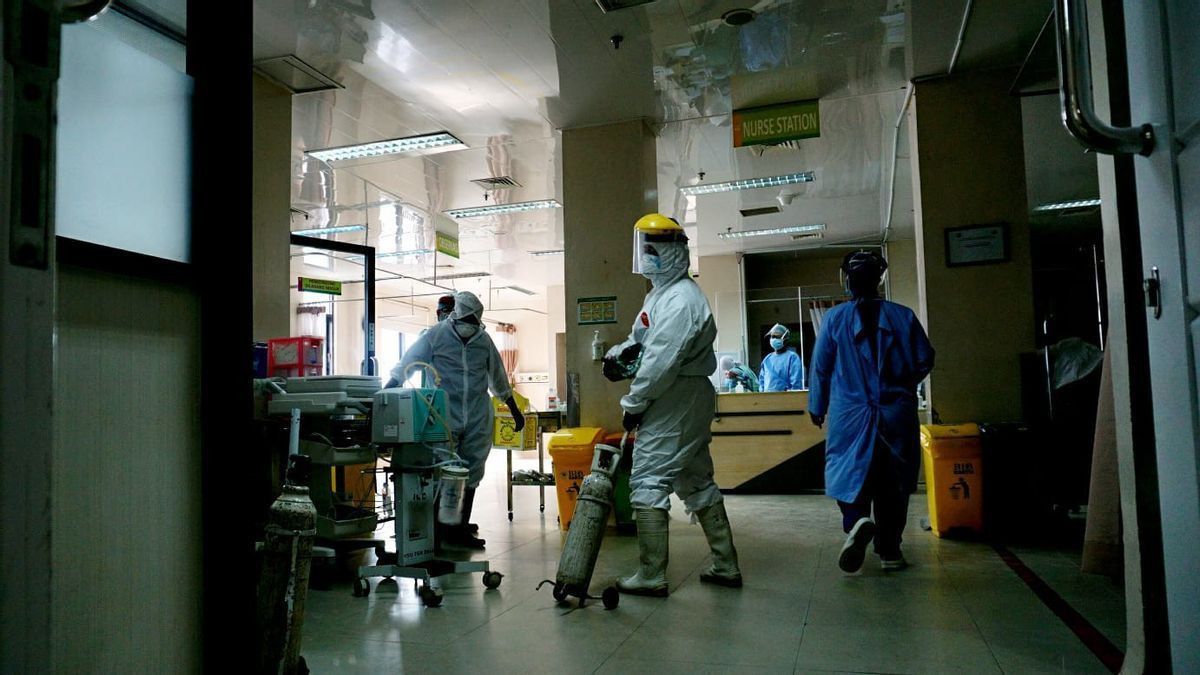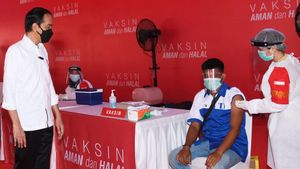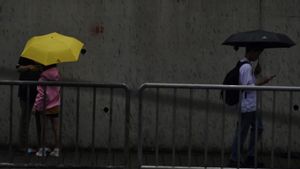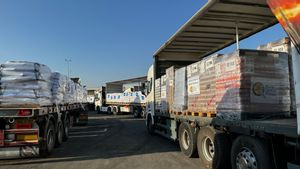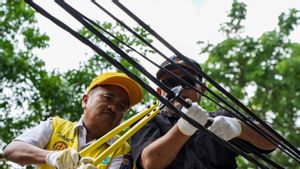JAKARTA - A number of areas on the island of Java and Bali are starting to show a downward trend in daily case numbers when compared to the peak of the Delta wave in July-August 2021.
"The figures this week provide optimism that what has been done so far has shown good results, but of course, these efforts and results need to be maintained going forward," said Health Ministry Spokesperson Siti Nadia Tarmizi in a press release received in Jakarta, Antara, Friday, February 18.
Data compiled by the Ministry of Health shows that several provinces are currently showing a downward trend in daily confirmed cases, including DKI Jakarta.
On Sunday, February 6, DKI Jakarta's daily cases were at 15.825 cases, but gradually decreased to 9.482 starting from Tuesday, February 15.
Not only in DKI Jakarta, Bali and Banten, which also recorded daily cases exceeding the peak of Delta, until last Tuesday showed a downward trend in daily cases.
On Wednesday, February 9, Bali Province recorded daily cases at 2.556 and gradually decreased on Tuesday, February 15 to 1.646. Then Banten, which on Saturday, February 13, was in the position of 7.283 recorded a decline on Tuesday, February 15, at the position of 6.500 cases.
Nadia said the COVID-19 handling strategy carried out in the last few weeks showed good results when viewed based on monitoring the number of patients hospitalized until Thursday (17/2) in the position of 36 percent of the total COVID-19 treatment and isolation beds provided.
"This figure is still very adequate for the treatment of COVID-19 patients and is not too burdensome for the current health services and health personnel," she said.
Nadia said the government continues to monitor data and evaluate performance in the field so that efforts to control COVID-19 are as expected.
Nadia, who also serves as Secretary of the Director General of Public Health at the Indonesian Ministry of Health, said that several preventive measures to control COVID-19 were strengthening testing, tracing, and treatment (3T).
As of last Wednesday, said Nadia, the number of specimens tested nationally was quite high, reaching 566.050 samples. "The activity of testing and tracing close contacts is very important in preventing the spread," she said.
VOIR éGALEMENT:
He said the hospital bed occupancy rate had not yet exceeded 60 percent in all hospitals.
“The need for health workers (nakes) to deal with the worst conditions is also being prepared. The shortage of health workers can still be overcome through HR arrangements so that it does not have an impact on health services," she said.
The English, Chinese, Japanese, Arabic, and French versions are automatically generated by the AI. So there may still be inaccuracies in translating, please always see Indonesian as our main language. (system supported by DigitalSiber.id)
